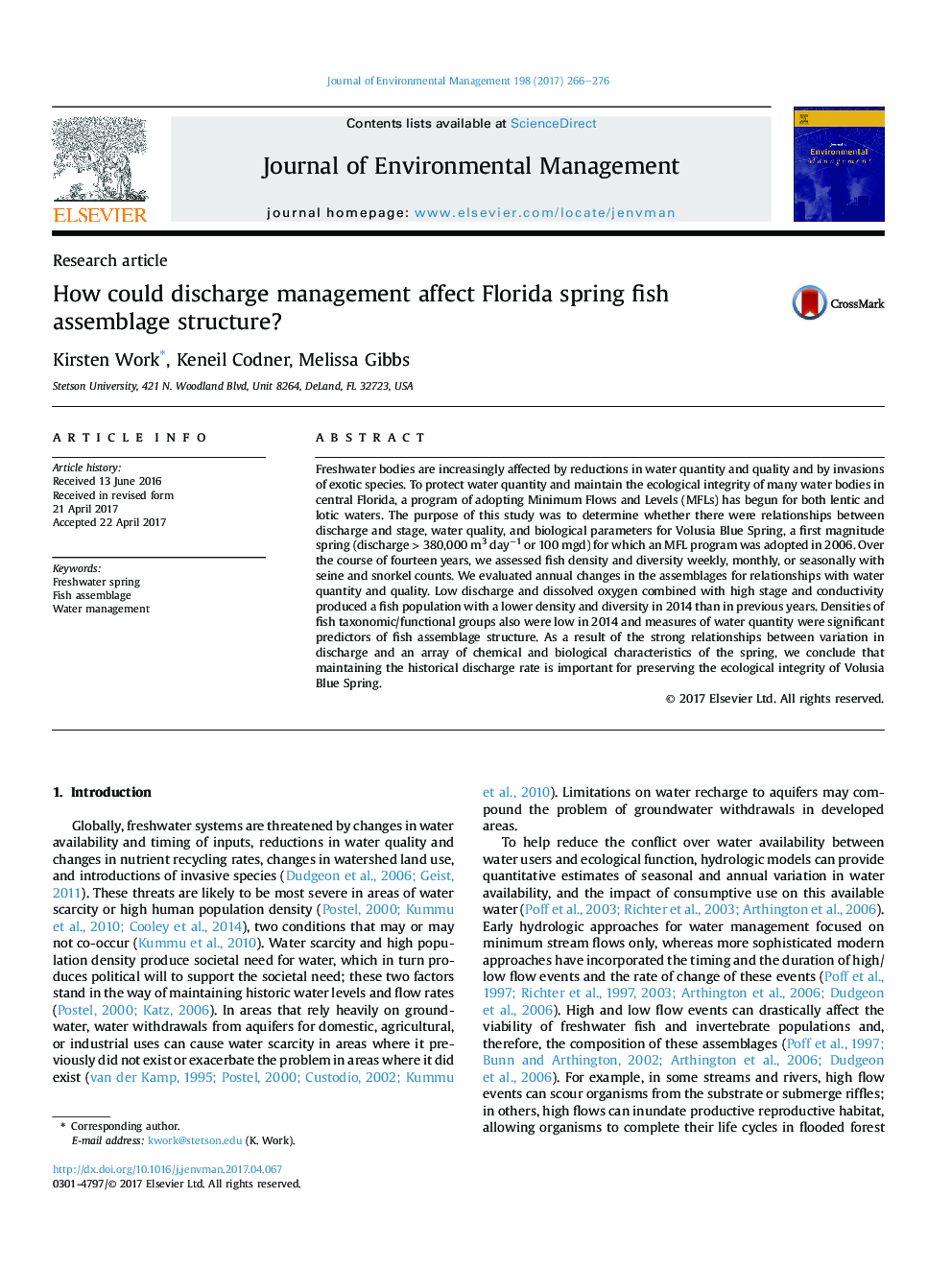| Article ID | Journal | Published Year | Pages | File Type |
|---|---|---|---|---|
| 5116751 | Journal of Environmental Management | 2017 | 11 Pages |
Abstract
Freshwater bodies are increasingly affected by reductions in water quantity and quality and by invasions of exotic species. To protect water quantity and maintain the ecological integrity of many water bodies in central Florida, a program of adopting Minimum Flows and Levels (MFLs) has begun for both lentic and lotic waters. The purpose of this study was to determine whether there were relationships between discharge and stage, water quality, and biological parameters for Volusia Blue Spring, a first magnitude spring (discharge > 380,000 m3 dayâ1 or 100 mgd) for which an MFL program was adopted in 2006. Over the course of fourteen years, we assessed fish density and diversity weekly, monthly, or seasonally with seine and snorkel counts. We evaluated annual changes in the assemblages for relationships with water quantity and quality. Low discharge and dissolved oxygen combined with high stage and conductivity produced a fish population with a lower density and diversity in 2014 than in previous years. Densities of fish taxonomic/functional groups also were low in 2014 and measures of water quantity were significant predictors of fish assemblage structure. As a result of the strong relationships between variation in discharge and an array of chemical and biological characteristics of the spring, we conclude that maintaining the historical discharge rate is important for preserving the ecological integrity of Volusia Blue Spring.
Keywords
Related Topics
Physical Sciences and Engineering
Energy
Renewable Energy, Sustainability and the Environment
Authors
Kirsten Work, Keneil Codner, Melissa Gibbs,
